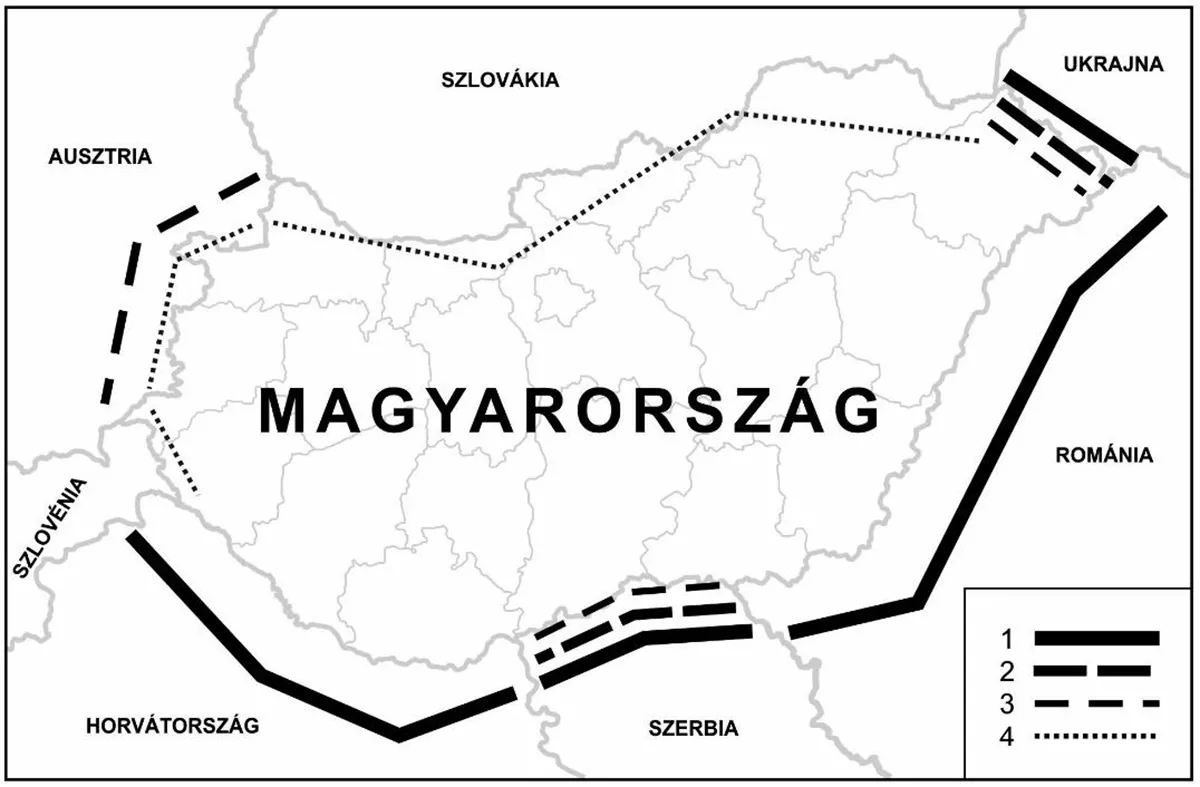The research project 'Change and Continuity in Hungarian Maps: Nation, Territoriality, Development and Border Policy' was launched in 2015 and completed in 2019 at the KRTK Regional Research Institute (KRTK RKI), supported by the National Research, Development and Innovation Office (NKFIH). One of its significant achievements is the monograph by Zoltán Hajdú (scientific advisor, KRTK RKI) entitled 'Historical State Geography of Hungary', which was published in July 2020 by Dialóg Campus Publishers. The volume, which fills a gap in political geography, addresses the turning points and specific eras of Hungary's state history based on a geographical approach.
The history of the Hungarian state and the conscious control and protection of the state borders have always been intertwined since the conquest of the region. The medieval defense system with its marshes and wasteland, the border (guard) county, the history of Transylvania largely related to border protection, the deeply indented Banovina defense zone and border fortress line established along the southern borders of the country, and then the history of the Military Border Guard Territory had far-reaching effects. After the Compromise of 1867, the internal and external borders had functionally different content. Historical Hungary, which disintegrated after the defeat in World War I, found herself surrounded by almost hostile borders, in a hostile Little Entente environment. Hungary has always had a great-power neighbor (and sometimes several), but the proximity of Germany and the Soviet Union during World War II proved almost catastrophic. After being on the losing side in World War II, the country accommodated herself to the structures of a divided world. The double Iron Curtain (the 'ordinary' Western one and the Soviet one) created a unique but complicated borderline world in terms of its function and control for both the West and the Soviet Union. In the changing world after the Cold War, exposure to national borders continued to exist in many respects, and the border dimensions of NATO and the EU are still evident in the life of the country. The new world order with its transformation today simultaneously raises several challenges in regard to allies, primary and secondary neighbors, and the global context The function and political content of borders are not being simplified, but are becoming increasingly sensitive, partly due to global environmental and migration processes. We recommend this volume to all thos interested in Hungary's changing state territory, border history and border policy.
-

Peculiarities of Hungary's 'external borders', 2019
Legend: 1 – external Schengen borders; 2 – external EU borders; 3 – external NATO borders; 4 – Euro zone borders.
Source: Hajdú, 2019 - Additional results of the project, which ended last year, showed, among other things, that the processes of the new era of global policy after the collapse of the bipolar world have fundamentally affected countries and continents. From 1991, the context of state geography and state borders in Europe was changed: the double iron curtain was abolished, Hungary's neighborhood environment changed, the new states pursued new national and state-building policies, which was reflected in interstate and cross-border relations further shaped by EU integration. The expansion of the EU and the border changes that were necessarily associated with it have brought with them a form of 'floating territories and borders'. It is unfortunate to keep European societies in a constant state of "state of response" on the most fundamental issues (national territory and borders). The internal and external borders of the EU have created completely different situations, with 'border psychosis' becoming less prevalent at the internal borders (Figure 1). The EU is a major source of funds with regard to external borders and neighborhood policy processes. The processes of the period after 2015 on the southern borders of Hungary are determined by migration movements and Hungarian legal and technical responses to them (legal and technical border closure). Hungarian state border policy was initially viewed negatively by most EU countries and the governments of neighboring states, but this was followed by a kind of 'acknowledgment'. Disagreement over external borders and migration have not disappeared, and internal and external 'border dilemmas' are likely to persist in the long run.